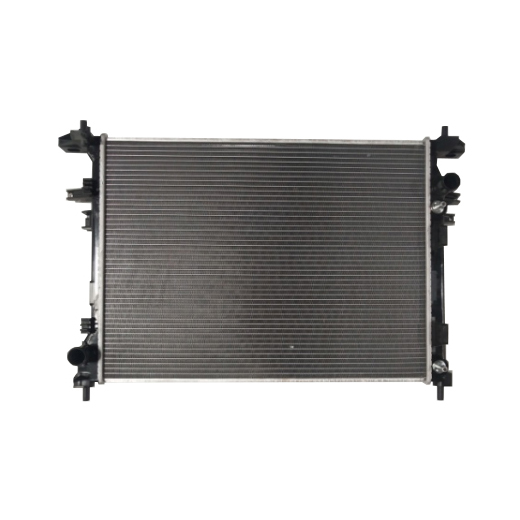Decoding the Differences: Automotive Aluminum Plastic Radiator vs. Traditional Copper-Brass Radiator
2024-03-01
Introduction:
In the realm of vehicle cooling systems, radiators play a pivotal role in maintaining engine temperature and ensuring optimal performance. Two primary types of radiators commonly used in vehicles are the automotive aluminum plastic radiator and the traditional copper-brass radiator. In this blog post, we'll dissect the key differences between these two radiator types, shedding light on their construction, functionality, and advantages.
Construction:
- Core: The core of an automotive aluminum plastic radiator is typically crafted from lightweight aluminum. It features a network of small tubes and thin aluminum fins, providing a large surface area for heat exchange.
- Tanks: Flanking the aluminum core are plastic tanks, which contain and direct the flow of coolant through the radiator. These tanks are usually molded from durable plastic materials and connected to the core via seals and gaskets.
2. Copper-Brass Radiator:
- Core: Traditional copper-brass radiators feature a core made of copper tubes and brass fins. Copper offers excellent thermal conductivity, while brass provides durability and corrosion resistance.
- Tanks: Similar to aluminum plastic radiators, copper-brass radiators have tanks on either side of the core. These tanks are typically made of brass or copper and soldered to the core for a secure connection.
Functionality:
1. Heat Transfer:
- Aluminum Plastic Radiator: Aluminum plastic radiators facilitate efficient heat transfer from the engine coolant to the surrounding air. The aluminum core, with its large surface area and lightweight construction, allows for rapid cooling of the coolant as air passes over the fins.
- Copper-Brass Radiator: Traditional copper-brass radiators also excel in heat transfer, thanks to the high thermal conductivity of copper. The copper tubes and brass fins provide effective heat exchange, dissipating engine heat into the surrounding air.
2. Corrosion Resistance:
- Aluminum Plastic Radiator: The plastic tanks of aluminum plastic radiators offer excellent corrosion resistance, reducing the risk of rust or corrosion. Additionally, aluminum itself is naturally resistant to corrosion, further enhancing the radiator's durability.
- Copper-Brass Radiator: While brass provides some corrosion resistance, copper-brass radiators are more susceptible to corrosion over time, particularly in harsh environmental conditions. Corrosion can lead to leaks and cooling system failures if left unchecked.
Advantages:
1. Lightweight Construction:
- Aluminum Plastic Radiator: Aluminum plastic radiators are significantly lighter than copper-brass radiators, contributing to overall vehicle weight reduction and improved fuel efficiency.
- Copper-Brass Radiator: While durable, copper-brass radiators tend to be heavier due to the materials used in their construction.
2. Corrosion Resistance:
- Aluminum Plastic Radiator: The plastic tanks and aluminum core of aluminum plastic radiators offer superior corrosion resistance compared to copper-brass radiators, reducing the risk of cooling system failures.
- Copper-Brass Radiator: While effective, copper-brass radiators are more prone to corrosion over time, especially in regions with harsh weather conditions or high levels of road salt.
Conclusion:
In conclusion, automotive aluminum plastic radiators and traditional copper-brass radiators differ in construction, functionality, and advantages. While both types of radiators serve the essential purpose of cooling the engine, aluminum plastic radiators offer advantages such as lightweight construction, superior corrosion resistance, and efficient heat transfer. However, the choice between aluminum plastic and copper-brass radiators ultimately depends on factors such as vehicle design, performance requirements, and budget considerations. By understanding the differences between these radiator types, motorists and manufacturers can make informed decisions to ensure optimal cooling system performance and vehicle reliability.



